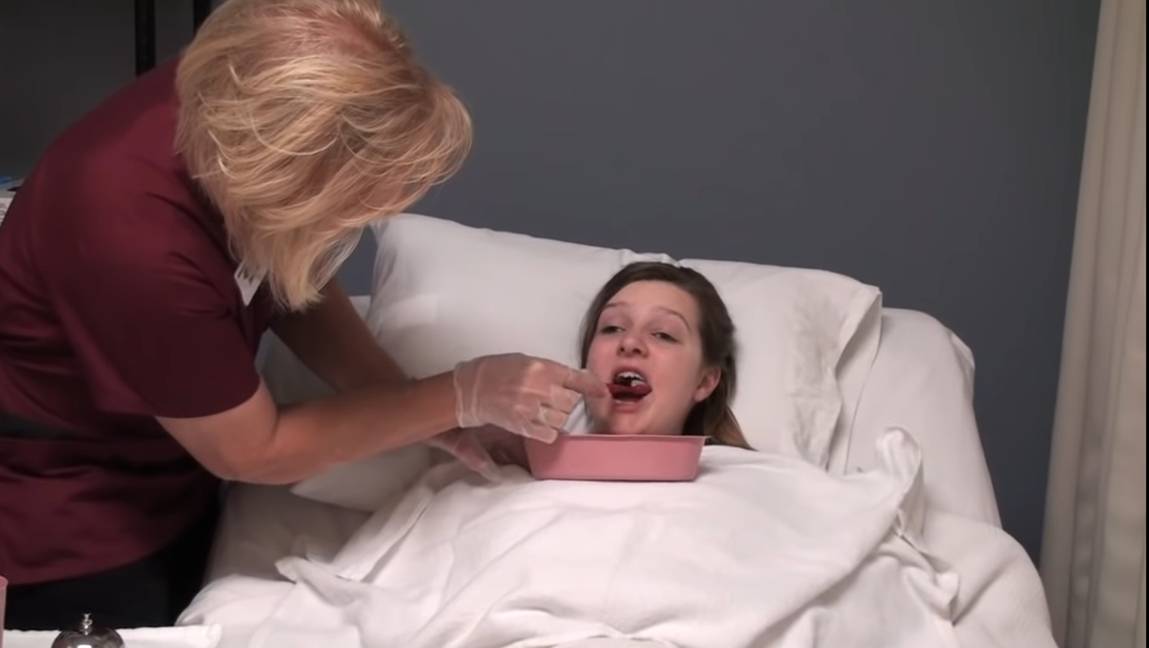
Mouth Care Nursing Procedure
Definition of Mouth Care:
Performing mechanical cleaning of the teeth & the mouth for conscious or unconscious patients is called mouth care.
Sick people have a higher risk of damage or infection in the mouth. Therefore, extra attention is needed in case of illness.
Indication of Mouth Care:
- Patient with fever
- Post-operative patient
- Unconscious patient
- Paralyzed patient
- Mouth breathing patient
- Patient on pre-ventilation with ETT
- Chronically ill patient
Contraindication of mouth care:
The poor mental attitude of the patient is a definite contraindication.
- Poor oral hygiene
- Healthy mouths do not require restoration for other reasons
- Uncontrolled diabetes
- Chronic steroid therapy
- High-dose irradiation
- Smoking & alcohol abuse
- Oral surgery or trauma may contraindicate tooth brushing.
Purpose of mouth care:
- To keep the mouth clean, moist, and fresh.
- To keep the teeth in good condition.
- To prevent mouth infection.
- To prevent bad smell (halitosis).
- To prevent furry tongue and soreness.
Equipment needed in Mouth care Nursing procedure:
- Tray with cover
- Rubber sheet
- Towel
- Kidney tray
- Tongue depressor
- Toothbrush
- Artery forceps
- Cup or glass
- Toothpaste, toothpowder
- Swab stick.
- Gauze pieces.
- Lubricant, boro glycerin
Complications due to poor mouth care:
- Bad breath or bad odor.
- Dental caries
- Inflammation
- Sores
- Pus formation
- Cracked lips
- Angular ulceration
The procedure of Mouth Care:
Preparation of the patient: Tooth brushing is the preferred technique for providing oral hygiene for unconscious Or disabled patients.
Steps of procedure:
- Greet the client.
- Explain the procedure to the patient or the patient relatives.
- Privacy maintains.
- Position the patient in a side-lying position towards the dependent side.
- Collect all equipment.
- Wash hands
- Place the mackintosh and towel beneath the patient's chin.
- Place the kidney tray close to the neck.
- Use any dentifrice to clean teeth.
- Do not pour water into the mouth if a patient is unconscious.
- Wraps a swab around the forceps covering the mouth systematically, and clean the mouth in the following order. Inside cheeks, gums, teeth, the roof of the mouth, and lips.
- Use a tongue depressor if needed and wipe the tongue from side to side.
- For a conscious patient, tooth, brush, and paste can be used the patient can Spit and water can be poured to wash his mouth.
- Use as many swabs as required till the mouth is clean.
- Repeat the entire procedure with swabs dipped in fresh water.
- When the teeth and tongue are cleaned well, stop the procedure, and wipe the lips and face with a towel.
- Apply glycerine born on the cracked lips and tongue.
Aftercare of patient and articles:
- Remove the kidney tray, mackintosh, and towel.
- Make the patient comfortable.
- Take all articles to the utility room, discard the waste, and clean them with soup and water. Boil or autoclave the forceps and articles and replace them in their usual places.
- Wash hands.
Recording and reporting:
- Record the procedure time and the mouth’s condition in the nurse’s record.
- Report any abnormal condition to the incharge and physicians.

Comments (0)